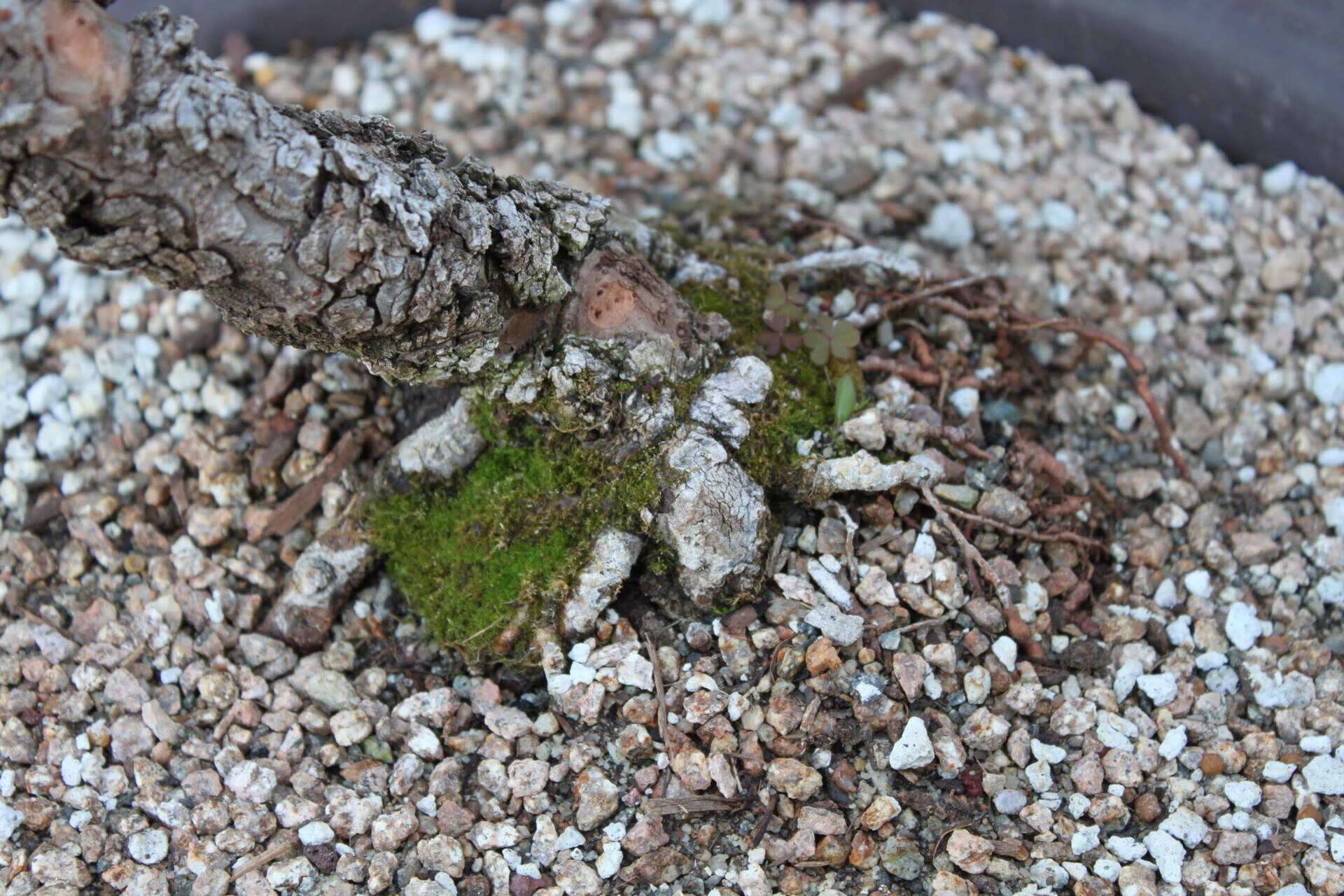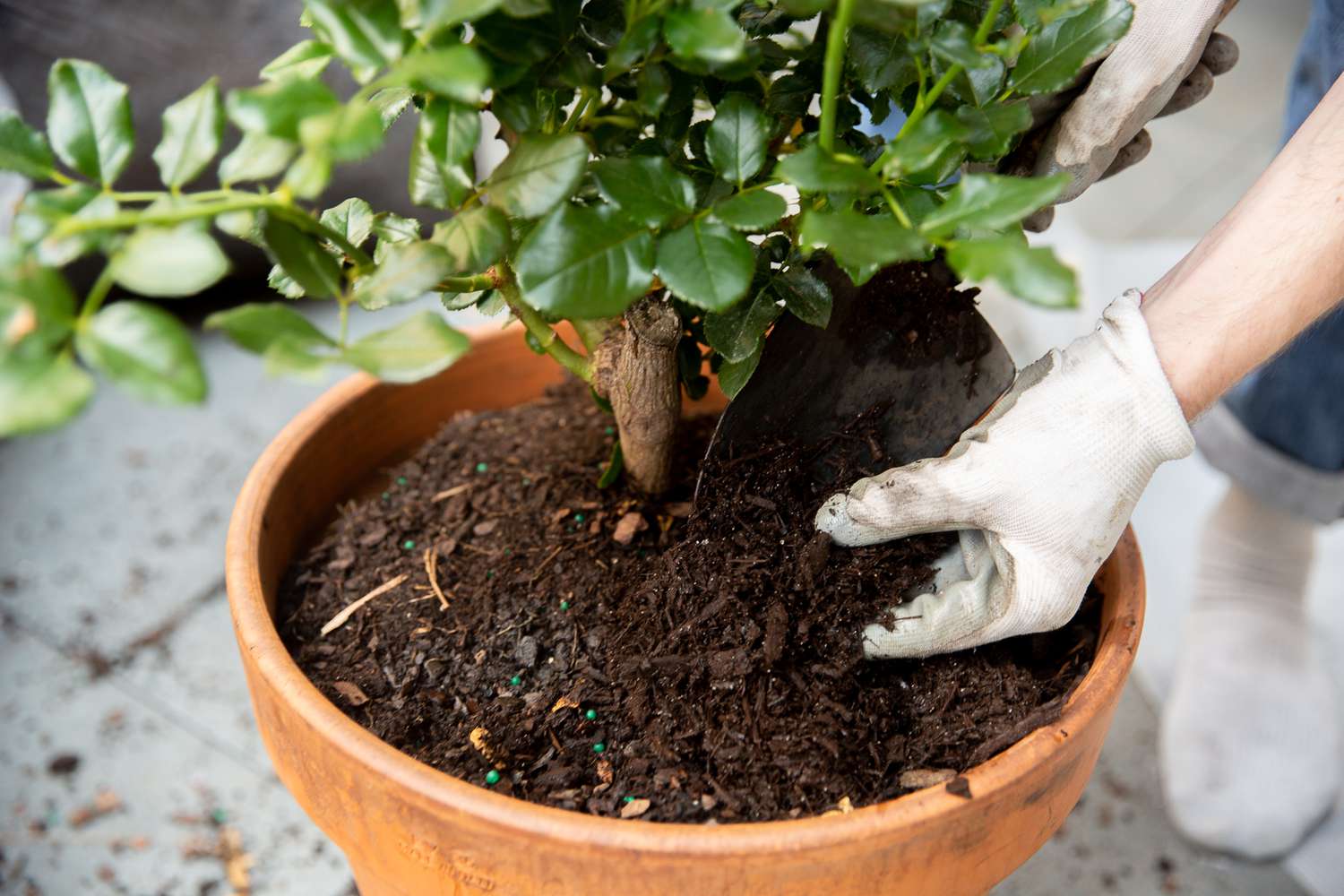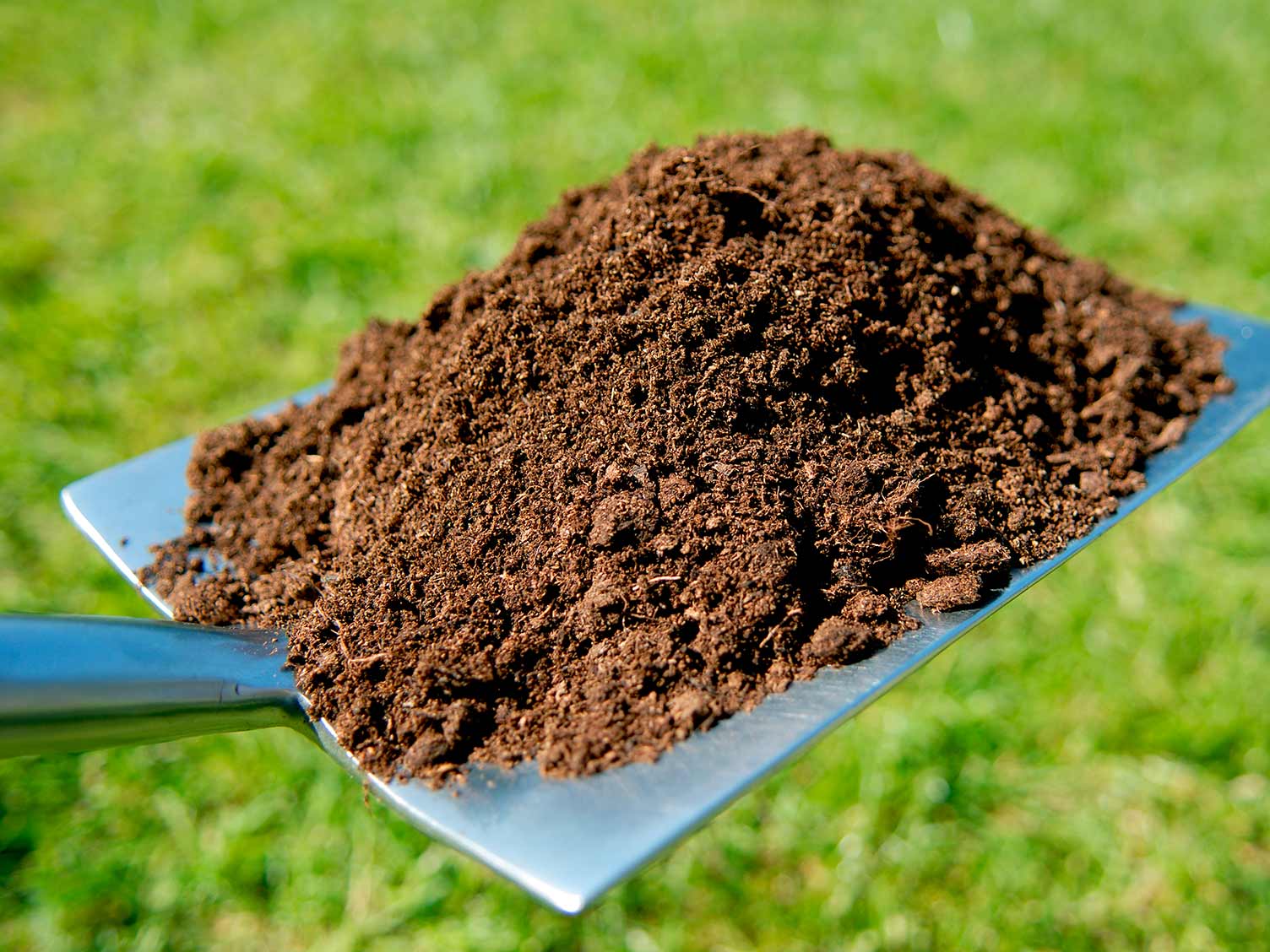Home>Garden Essentials>What Is The Best Soil Mix For Tomatoes


Garden Essentials
What Is The Best Soil Mix For Tomatoes
Modified: August 27, 2024
Discover the ideal garden soil mix for growing luscious tomatoes with our expert tips and recommendations. Achieve optimal results in your tomato garden!
(Many of the links in this article redirect to a specific reviewed product. Your purchase of these products through affiliate links helps to generate commission for Storables.com, at no extra cost. Learn more)
Introduction
Tomatoes are one of the most popular and versatile vegetables to grow in a garden. Whether you have a small balcony, a raised bed, or a sprawling backyard, growing tomatoes can be a rewarding and enjoyable experience. However, to ensure the success and productivity of your tomato plants, it is crucial to start with the right soil mix.
The soil plays a vital role in providing the necessary nutrients, water retention, and drainage for tomato plants to thrive. The quality and composition of the soil can greatly impact the growth, health, and yield of your tomatoes. Therefore, understanding the best soil mix for tomatoes is essential for gardeners of all experience levels.
In this article, we will explore the factors to consider when choosing a soil mix for tomatoes and provide recommendations for container gardening, raised beds, and traditional garden beds. We will also share some valuable tips for preparing and enriching the soil to create an optimal growing environment for your tomato plants.
Let’s dive in and discover the secrets to cultivating vibrant, flavorful, and bountiful tomatoes!
Key Takeaways:
- Choose a soil mix with good drainage, water retention, and nutrients for thriving tomato plants. Consider pH level, aeration, and texture to create an ideal growing environment.
- For container, raised bed, or traditional garden tomato growing, select the right soil mix and follow soil preparation tips for healthy, flavorful harvests.
Read more: What Is The Best Soil Mix For Strawberries
Factors to consider when choosing a soil mix for tomatoes
When deciding on the best soil mix for your tomatoes, it is important to consider several factors. Let’s explore these factors in detail:
- Drainage: Tomatoes prefer well-draining soil to avoid the risk of root rot. The soil mix should have good drainage capabilities to prevent waterlogged conditions.
- Water retention: While drainage is important, it is equally crucial to have a soil mix that retains adequate moisture for the plants. Tomatoes require consistent watering, and the soil should be able to hold moisture without becoming overly saturated.
- Nutrients: Tomatoes are heavy feeders and require a nutrient-rich soil mix. Look for a mix that includes organic matter, such as compost or well-rotted manure, to provide essential nutrients for optimal growth.
- pH level: The pH level of the soil greatly affects nutrient availability to the plants. Tomatoes prefer slightly acidic soil with a pH range of 6.0 to 6.8. Testing the pH level of the soil and adjusting it if necessary can benefit the overall health and productivity of your tomato plants.
- Aeration: Good aeration is important for the root system of tomato plants. A soil mix that allows for proper airflow and oxygenation can help enhance root development and prevent issues such as root suffocation.
- Texture: The texture of the soil mix is an important consideration. It should be loose and friable, allowing for easy root penetration and nutrient absorption. Avoid heavy clay soils that can compact easily, restricting root growth.
By taking these factors into account, you can select a soil mix that provides the ideal growing conditions for your tomato plants. Now, let’s explore the best soil mix recommendations for different growing scenarios.
Best soil mix for tomatoes in containers
Container gardening offers flexibility and convenience, particularly for those with limited space. When growing tomatoes in containers, it is crucial to choose the right soil mix to ensure the plants thrive. Here’s a recommended soil mix for tomatoes in containers:
1. Start with a high-quality potting mix: Look for a potting mix specifically formulated for container gardening. These mixes are usually lightweight and well-draining, providing a good balance of water retention and aeration.
2. Add compost: Incorporating compost into the potting mix adds valuable organic matter and nutrients. Aim for a ratio of 25% compost to 75% potting mix for a nutrient-rich soil mix.
3. Include perlite or vermiculite: To improve drainage and aeration, mix in a small amount of perlite or vermiculite. These additives prevent the soil from becoming compacted and enhance root development.
4. Consider slow-release fertilizer: Tomato plants can benefit from a slow-release fertilizer added to the soil mix at planting time. This provides a steady supply of nutrients throughout the growing season.
5. Monitor moisture levels: Container-grown tomatoes may require more frequent watering due to their limited soil volume. Be sure to check the moisture levels regularly and water as needed, keeping the soil evenly moist but not waterlogged.
Remember to choose containers with adequate drainage holes to prevent waterlogging, and position them in a sunny location where tomatoes can receive at least 6-8 hours of sunlight per day. Tomatoes grown in containers require consistent care and monitoring, but with the right soil mix and proper attention, they can yield abundant and delicious harvests.
Best soil mix for tomatoes in raised beds
Raised beds offer numerous benefits for growing tomatoes, including improved drainage, better soil structure, and easier weed control. When it comes to selecting the best soil mix for tomatoes in raised beds, consider the following recommendations:
1. Blend topsoil and compost: Start by combining equal parts of high-quality topsoil and compost. This mixture provides a good balance of nutrients, water retention, and drainage.
2. Include organic matter: Adding additional organic matter, such as well-aged compost or leaf mold, can further enrich the soil and enhance its fertility. Aim to incorporate around 20-30% organic matter into the mix.
3. Consider aeration and drainage: To promote optimal root growth and prevent stagnant water, incorporate materials like perlite or pumice into the soil mix. These additives improve aeration and drainage, preventing the roots from becoming waterlogged.
4. Test and adjust pH: Test the pH of the soil in your raised bed. Tomatoes prefer a slightly acidic soil with a pH range of 6.0 to 6.8. If needed, adjust the pH with organic amendments like lime or sulfur to create an optimal growing environment.
5. Mulch the surface: Once the soil mix is prepared, apply a layer of organic mulch, such as straw or wood chips, on the surface of the raised bed. Mulching helps conserve moisture, suppresses weed growth, and regulates soil temperature.
Remember to regularly monitor the moisture levels in the raised bed and water accordingly. Raised beds tend to drain more quickly than traditional garden beds, so be mindful of providing adequate water during dry spells.
With the proper soil mix, raised beds can provide an excellent growing environment for tomatoes, resulting in healthy plants and abundant yields.
A good soil mix for tomatoes is one that is well-draining and rich in organic matter. A mix of equal parts compost, peat moss, and perlite or vermiculite works well. This will provide the right balance of nutrients and aeration for healthy tomato plants.
Best soil mix for tomatoes in traditional garden beds
When it comes to growing tomatoes in traditional garden beds, the soil plays a crucial role in providing the necessary nutrients for healthy plant growth. Here are some recommendations for the best soil mix for tomatoes in traditional garden beds:
1. Test and amend the soil: Before planting tomatoes, it is advisable to test the pH and nutrient levels of your garden soil. Tomato plants prefer a slightly acidic pH range of 6.0 to 6.8. If the soil pH is outside of this range, you can amend it with organic materials like lime or sulfur accordingly.
2. Incorporate organic matter: Enrich the soil by adding organic matter, such as well-aged compost, to improve its structure and fertility. Organic matter not only provides essential nutrients but also enhances water retention and drainage in the soil.
3. Consider soil texture: Sandy or loamy soils are ideal for growing tomatoes, as they offer good drainage while retaining adequate moisture. If your garden soil is heavy clay, you can improve its texture by adding organic matter and working in sand or perlite to promote better drainage.
4. Apply balanced fertilizer: Tomatoes are heavy feeders, so it is important to provide them with a balanced fertilizer. Before planting, apply a slow-release granular fertilizer or incorporate a well-balanced organic fertilizer into the soil mix to provide a steady supply of nutrients throughout the growing season.
5. Mulch the soil: Once the tomatoes are planted, apply a layer of organic mulch, such as straw or shredded leaves, around the base of the plants. Mulching helps conserve moisture, suppresses weed growth, and regulates soil temperature, creating a more favorable growing environment for tomatoes.
Regularly monitor the soil moisture levels and water the plants deeply and evenly when needed. In traditional garden beds, proper spacing between tomato plants is important to allow for good airflow and to prevent the spread of diseases.
By following these recommendations and providing the right soil mix, you can create an optimal growing environment for tomatoes in traditional garden beds, promoting healthy growth and maximizing your harvest.
Read more: What Is The Best Soil Mix For Blueberries
Tips for preparing and enriching the soil for tomatoes
Preparing and enriching the soil before planting tomatoes is essential for creating a nutrient-rich and productive environment for your plants. Here are some valuable tips to help you achieve optimal soil conditions:
- Start with a soil test: Conduct a soil test before planting to determine the pH level and nutrient content of your soil. This will guide you in making specific amendments to create an ideal growing environment for tomatoes.
- Amend the soil: Based on the results of the soil test, amend the soil as needed. Add organic matter, such as compost, well-rotted manure, or leaf mold, to improve soil fertility and structure. Incorporating organic matter helps retain moisture, enhances nutrient availability, and promotes beneficial microbial activity in the soil.
- Avoid over-watering: Tomatoes thrive in well-draining soil. Avoid over-watering, as excessive moisture can lead to root rot and other diseases. Ensure proper drainage in the planting area and monitor soil moisture regularly to keep it consistently moist but not waterlogged.
- Consider mulching: Apply a layer of organic mulch around the base of the tomato plants. Mulching helps conserve soil moisture, suppresses weed growth, and regulates soil temperature. Use materials like straw, wood chips, or shredded leaves for effective mulching.
- Use balanced fertilizer: Provide your tomato plants with a balanced fertilizer to ensure they receive essential nutrients for growth and fruit production. Choose a fertilizer specifically formulated for tomatoes or opt for an organic fertilizer. Follow the recommended application rates and timing for best results.
- Rotate crops: Practice crop rotation in your garden to prevent the buildup of diseases and pests specific to tomatoes. Avoid planting tomatoes in the same spot year after year. Rotate tomatoes with other non-related vegetables to maintain a healthy soil ecosystem.
- Monitor and address pest and disease issues: Regularly inspect your tomato plants for common pests like aphids, tomato hornworms, and fungal diseases like early blight or powdery mildew. Take preventive measures, such as using insecticidal soap or organic fungicides, to manage pest and disease problems in the early stages.
By following these tips, you can prepare and enrich the soil for tomatoes, creating an optimal environment for your plants to thrive. Healthy soil leads to vigorous growth, abundant harvests, and ultimately, the tastiest and most vibrant tomatoes!
Conclusion
Growing tomatoes successfully starts with the right soil mix. Understanding the factors to consider, such as drainage, water retention, nutrients, pH level, aeration, and texture, is crucial for selecting the best soil mix for your tomatoes. Whether you are growing tomatoes in containers, raised beds, or traditional garden beds, there are specific recommendations to follow.
In containers, opt for a high-quality potting mix supplemented with compost, perlite or vermiculite, and slow-release fertilizer. Regular monitoring of moisture levels is key for container-grown tomatoes.
Raised beds benefit from a blend of topsoil and compost, with added organic matter for fertility. Enhance aeration and drainage by incorporating perlite or pumice. pH testing and adjustment, as well as mulching, contribute to a successful raised bed tomato garden.
In traditional garden beds, soil amendments, including organic matter and balanced fertilizers, play a vital role. Proper spacing, regular monitoring of moisture levels, and mulching are important practices to adopt in traditional garden beds.
Additionally, preparing and enriching the soil for tomatoes can be further enhanced by conducting soil tests, avoiding over-watering, using organic mulch, practicing crop rotation, and addressing pest and disease issues promptly.
By providing your tomato plants with the optimal soil mix and following these guidelines, you are setting the stage for healthy growth, abundant yields, and flavorful tomatoes.
So, roll up your sleeves, prepare your soil, and get ready to enjoy the satisfaction of cultivating your own delicious tomatoes straight from the garden.
Frequently Asked Questions about What Is The Best Soil Mix For Tomatoes
Was this page helpful?
At Storables.com, we guarantee accurate and reliable information. Our content, validated by Expert Board Contributors, is crafted following stringent Editorial Policies. We're committed to providing you with well-researched, expert-backed insights for all your informational needs.















0 thoughts on “What Is The Best Soil Mix For Tomatoes”